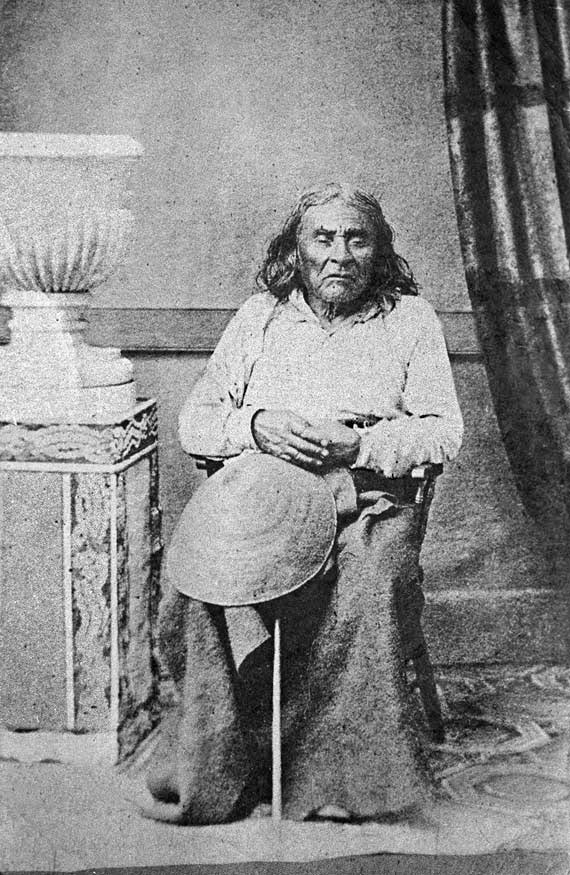Native American
Agua Caliente Band of Cahuilla Indians – Palm Springs, CA

© Frank H. Jump
Ancestors of the Agua Caliente Band of Cahuilla Indians settled in the Palm Springs area centuries ago and developed complex communities in the Palm, Murray, Andreas, Tahquitz, Snow Creek and Chino Canyons. Mirroring the migration stories of the Cahuilla, archaeological research has proven that humans have occupied the Tahquitz Canyon area for at least 2,000 years.
The Cahuilla and most other Tribes of the area belong to the Shoshonean division of the Uto-Aztecan linguistic family. Tribes in this group range from the Aztecs of Mexico to the Hopi, Papago and Pima of Arizona, the Ute of Colorado and other nearby regional Tribes, including the Serrano, Cupeño and Gabrielino. The Cahuilla people lived in villages, and several villages together made up a larger political and territorial unit called a tribelet, or sib. Each sib was divided into lineages, which consisted of both nuclear and extended families. Cahuilla society was also divided into two groups, or moieties, known as Wildcat and Coyote.
The Cahuilla Indian name for the Palm Springs area was Sec-he (boiling water); the Spanish in turn named it Agua Caliente (hot water). Later came the name “Palm Springs” in reference to both the native Washingtonia filifera palm tree and the Agua Caliente Hot Spring. The hot spring waters provided the Cahuilla with clean water, a place for bathing, and a connection point with a spiritual underworld populated by nukatem, or ancient sacred beings. The hot spring’s waters were also utilized for healing purposes, as they are even today. – Agua Caliente Band of Cahuilla Indians – A Sovereign Tribal Government
In Arizona – Kokopelli Plays His Flute – Where is His Green Card? – Tucson, AZ

In a bar in Tucson AZ © Frank H. Jump
Who is Kokopelli? CLICK TO PLAY
Known as a fertility god, prankster, healer and story teller, Kokopelli has been a source of wonder throughout the country for centuries. Kokopelli embodies the true American Southwest, and dates back over 3,000 years ago, when the first petroglyphs were carved. Although his true origins are unknown, this traveling, flute-playing Casanova is a sacred figure to many Southwestern Native Americans. Carvings of this hunch-backed flute-playing figure have been found painted and carved into rock walls and boulders throughout the Southwest. – Indigenous People dot net
Chief Seattle – Spiritual Guardian of a City – Tilikum Place & Around Pioneer Square – Seattle, WA

© Frank H. Jump

© Vincenzo Aiosa
Chief Seattle (an Anglicization of Si’ahl), ((Lushootseed pronunciation: [siʔaɬ], (c. 1780 – June 7, 1866), was a Dkhw’Duw’Absh (Duwamish) chief, also known as Sealth, Seathle, Seathl, or See-ahth, and a leader of the Suquamish and Duwamish Native American tribes in what is now the U.S. state of Washington. A prominent figure among his people, he pursued a path of accommodation to white settlers, forming a personal relationship with David Swinson “Doc” Maynard. Seattle, Washington was named after him. A widely publicized speech arguing in favor of ecological responsibility and respect of native Americans’ land rights has been attributed to him; however there is controversy about what, if anything, he actually said. – Wikipedia

© Frank H. Jump

© Frank H. Jump

© Frank H. Jump

© Frank H. Jump

© Frank H. Jump

© Frank H. Jump

© Frank H. Jump

© Frank H. Jump
A multimedia presentation, interpreted and narrated by Wes Felty: Chief Seattle’s reply to a Government offer to purchase the remaining Salish lands.















































